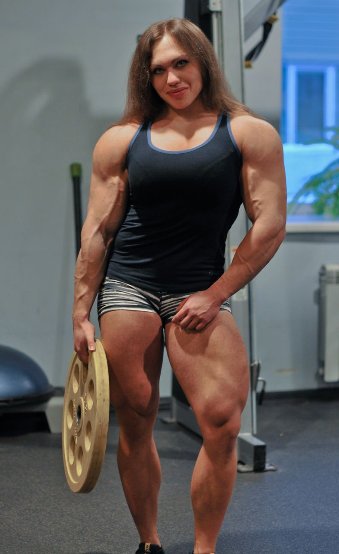The Evolution of Bodybuilding
At the mention of the word ‘bodybuilding’, the names of Lou Ferrigno and Arnold Schwarzenegger always come to mind. While the former California governor played an important role in popularizing the sport, he only picked it up from others who came before him.
As early as the first decade of the 20th century, there were a number of men with well-chiseled bodies. These were known as the ‘strongmen’. In their workouts, they lifted large boulders in a bid to pile onto their huge muscles.
With their great strength and skills, the strongmen entertained audiences with admirable exploits of strength, skills, and tricks.
Humble Beginnings – Eugen Sandow
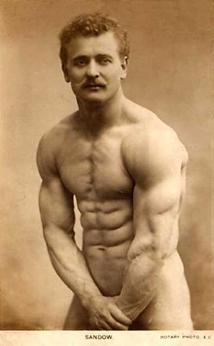
One of the first strongmen is Eugen Sandow, who set out to explore his passion for huge muscles while still in his teens. At that time, it was mistakenly believed that a huge belly made a man stronger. Wait until Sandow exposed that for the lie it was.
Today, he is considered the father of bodybuilding. In fact, Sandow is credited with coining the term ‘bodybuilding’ in 1898. Unlike, the strongmen of yore who relied on weightlifting to show their skill, he was the first person to solely rely on his impressive physique.
Although born in Germany, Sandow traveled the world showing off his muscles. Later, he organized and participated in the first ever bodybuilding competition in 1891. It was, however, not until 1901 that he organized the biggest bodybuilding event ever. It was held in London and was known as “The Great Competition.”
That was long before the Mr. Olympia Competition ever became a reality. Who would have known that the Mr. Olympia trophy would later be coined ‘The Sandow’?
For the rest of the 20th century, bodybuilding evolved to become a popular subculture in America and the rest of the world. Right from the early days, bodybuilders have sacrificed with their bodies to try out new training styles and nutritional choices.
As such, compared to the days of Sandow, the bodybuilder’s physique has become bigger and more masculine today.
Bodybuilding in the 1930s
It was in the 1930s that the first competitive bodybuilding competitions were held. At first, it was the Armature Athletic Union (AAU), which held these events which included weightlifting. This was later to be renamed the Mr. America competition.
Soon, bodybuilding competitions were attracting huge crowds due to their growing popularity. That’s how bodybuilding came to the attention of Joe Weider, one of the most important players in the sport in later decades.
Weider had already established himself as the publisher of several fitness magazines including The Young Physique and Demi-Gods. Recognizing the economic opportunity that the bodybuilding competitions offered, he became fully immersed in organizing bodybuilding-only pageants.
Gordon LaVelle has written about Weider in his book on bodybuilding. According to him, those who worked with Weider describe him as someone with a great sense of focus, vision, and an indefatigable work ethic. Others described him as cunning and cut-throat, too.
Weider formed the International Federation of Bodybuilders (IFBB), through which he organized the first Mr. Olympia in 1965. Certain commentators think Weider was only taking advantage of the 1930s’ golden age of bodybuilding.
In the 1930s, bodybuilders were beginning to get over the obsession with the strongmen of the previous century. While bodybuilding existed along its weightlifting offshoot, the men involved were increasingly working towards building balanced physiques.
With advancement in training equipment which coincided with new exercise techniques, bodybuilders focused on losing body fat as well as building muscles. It was at that time that the first gyms and group training techniques were developed.
In 1935, Leopold Ruziicka synthesized testosterone, which was adopted by bodybuilders as a faster way of attaining the great muscles they longed for. Without synthetic testosterone, bodybuilding wouldn’t have become what it is today without.
The First Mr. America Competition
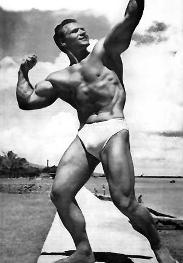
With the advent of AAU’s Mr. America, the athletes, who were both weightlifters and bodybuilders, worked hard to prove their athletic skills. It was not uncommon to see armature, as well as professional bodybuilders, exercising on the beachfront on the coast of California. One of the most popular places was Muscle Beach in Santa Monica.
For the early bodybuilders, training hard to get into the best possible shape was a must-do if they hoped to be anywhere close to winning the competitions. Their trainers advised them to do everything to gain bigger muscles through the weight-training techniques of that era.
With the arrival of the first Mr. America competition in 1939, bodybuilding had come of age. The winner of the event was John Grimek, who went ahead to win in 1940 as well. David Robinson describes him as a man with an unparalleled muscular build, at least up to that time.
As such, Grimek became the reference point for men who hoped to build up their muscles. With time, bodybuilders such as Steve Reeves and Clancy Ross were able to create for themselves more impressive physiques than that of Grimek.
When Ross was declared Mr. America in 1945, many thought the modern age of bodybuilding had finally arrived in America and the world. However, bodybuilding still had to prove itself as a sport.
The Era of Steve Reeves
Enter, Steve Reeves and the era of crossover bodybuilders/movie stars had arrived. From the outset, it wasn’t just his muscles that made him attractive but his movie star looks too.
After winning the 1947 Mr. America competition, Reeves went ahead to establish himself as a movie star. He is, however, reported to have lost the inaugural Mr. Universe title to John Grimek, who was making a comeback to the bodybuilding circles.
Reeves eventually won the Mr. Universe title in 1950, the year when he became a bodybuilding legend. He was the first bodybuilder to ever feature in a movie. Reeve’s first acting role was in the movie Jail Bait, in 1954.
He went on to act in 19 films with his most successful being the role he played in Hercules, the 1958 movie depicting the mythical Greek character. Because of the roles he played in several movies and his almost perfect physical looks, Reeves made bodybuilding popular at a time when anabolic steroids had just been invented.
John Ziegler and Anabolic Steroids
The first of the anabolic steroids was Dianabol, which was developed in 1955 by John Ziegler, a physician. Soon, other steroids became part of the market. Because of his success as a bodybuilder and movie star, Steve Reeves became an inspiration a whole new generation of musclemen.
With the use of steroids, it became easier for bodybuilders to surpass anything that had already been achieved by bodybuilders up to that point. It was at this time that athletes such a Reg Park came onto the scene.
Joe Weider and Mr. Olympia
By the early 1960s, Joe Weider was beginning to take up an important role in the bodybuilding world as a publisher of magazines and an author of industry-related books. He and his brother Ben Weider were already thinking of organizing a bodybuilding competition through the IFBB.
As such, the IFBB organized the first Mr. Olympia bodybuilding competition in 1965. This is the competition that catapulted Larry Scott into fame as the first ever Mr. Olympia. Scott went on to win the competition the following year amidst the new judging standards that emphasized vascular and striated muscles. At 205 pounds, he had attained what no one else had managed in the entire history of the sport up until that time.
It was subsequent Mr. Olympia competitions that would bring Sergio Olivia and Arnold Schwarzenegger to the fore. For three consecutive years from 1967, Olivia won the Mr. Olympia competition.
Arnold Schwarzenegger’s Dominance
In 1967, Arnold Schwarzenegger burst onto the bodybuilding scene with his win of the Mr. America title. That was before he went on to win Mr. Universe five times and Mr. Olympia for six consecutive years from 1970 to 1975, followed by his final title in 1980.
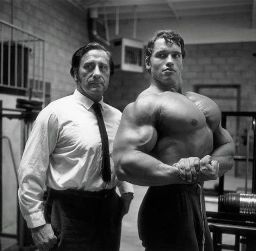
To achieve this fete, Schwarzenegger worked very closely with Joe Weider, who was at that time his mentor and sponsor. In the history of the sport, there is yet to be an athlete who succeeded more than Schwarzenegger, at least outside the sport.
Schwarzenegger’s reign as a bodybuilding champion was to last from 1960 to 1980, a period within which there was tremendous growth in the fitness industry in America and the world. From President Ronald Reagan to a number of Hollywood action heroes, many people took to bodybuilding exercise routines with a lot of enthusiasm.
After the 1980s, there came onto the scene bodybuilders with more muscle than anything Schwarzenegger was capable of. Only that none of the great champions of that time could match the former California Governor’s fame.
Take Ronnie Coleman a native of Texas who won the Mr. Olympia title eight times over. Although he beat Schwarzenegger in terms of muscle build, he stood only 5-foot-10 compared to Schwarzenegger’s 6-foot-2.
At the height of his career, Coleman is reported to have weighed 295 pounds. As for Schwarzenegger, he never weighed more than 235 pounds. Compare that to the 180 pounds weight of pioneer bodybuilders like Sandow and you have a clear idea how advantageous bodybuilding had become in the 1980s.
Yet in the 1970s Schwarzenegger and other athletes such as Mike Mentzer, Dave Draper, and Frank Zane had all been household names albeit small in stature.
IFBB and bodybuilding in the 1970s
It was, however, the work of organizations such as the IFBB that helped bring bodybuilding to the fore. Movie makers in Hollywood could not just get enough of muscular actors. These men were sought out and turned into overnight starts thus helping to further popularize the sport.
With this multi-pronged support, the American fitness industry grew by leaps and bounds to become very lucrative to those who invested in and participated in it.
By the end of the 1970s, the IFBB was not just the largest bodybuilding organization, it also had a presence in more than 100 nations. It all the world sports federations, it was the sixth-largest. To the world, this was an authentic sport perhaps because of its growing popularity and the billions of dollars it brought in terms of profits.
1980s and the mainstreaming of bodybuilding routines
The 1980s saw a surge in the popularity of bodybuilding with wider adoption in the training regimes for other sports. Athletics was the biggest beneficiary of this. Within no time, athletes such as Carl Lewis and Ben Johnson were doing weight training as well dieting as ways of gaining greater strength. Apart from enhancing performance, weight training helped athletes to increase their profiles.
In the movie industry, actors such as Chuck Norris and Sylvester Stallone hit the gym so as to boost their marketability. Other actors who have since gotten movie roles because of their well-chiseled bodies include Dwayne Johnson, Bruce Lee, Sylvester Stallone, Michael Clark Duncan, Vin Diesel, Jean-Claude Van Damme, Chris Hemsworth, and Bolo Yeung.
As far as bodybuilding was concerned, the athletes were gaining more muscles than before given the growing obsession with size. The exercises were getting more extreme, even as anabolic steroids continued to play a central role.
Most of the athletes joining bodybuilding during that time were attracted by the huge endorsements, sponsorships, and prize money on offer. These athletes had to keep using steroids to grow their muscles.
Many of them grew, 1970s a period when the well-chiseled male body was a constant feature on magazine pages and television programs. They wanted what they had seen in the movies starring famous bodybuilders such as Schwarzenegger.
1990s – The Era of Growth Hormone and Steroids
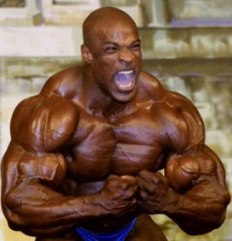
By the 1990s athletes had adopted near-maniacal training regimes coupled with the use of steroids and growth hormones for bigger physiques that their pioneers could only have dreamed of. A great example is Dorian Yates, the 1992 winner of the Mr. Olympia title.
In the previous decade, growth hormones had not yet hit the bodybuilding stage. With these hormones, athletes were now better placed to achieve leaner weights in record time. Take Ronnie Coleman who failed to win the Mr. Olympia title while weighing 245 pounds only to claim the title a few years later at 297 pounds.
The craze with growth hormones continued well into the 1990s when amateurs, as well as the professionals, went out full throttle to make a name and earn more money. As bodybuilders gained bigger bodies, competition among them also became cutthroat.
They were, therefore, always striving to gain bigger muscle mass to set themselves apart from the crowd of potential competitors. But the competitors weren’t just lying down waiting. They too were doing everything to be the ones steering clear of all competition.
New Dietary Strategies and Training Techniques
However, it is important to note that by that time, dietary strategies and training techniques had gone through a tremendous transformation. So it wasn’t just because of the drugs that bodybuilders appeared bigger than in previous decades, rather their dedication to living by the bodybuilding book is what gave them the best desirable results.
Due to the increasing use of growth hormones athletes such as Lee Haney, who won the Mr. Olympia title seven times were looking bigger and well-built than their counterparts from the previous decade. He weighed a maximum of 240 pounds, much more than anyone else up to that point.
Observers have described the 1990s as the period when bodybuilders became too much obsessed with building more muscle mass. Between 1992 and 1997, Dorian Yates went ahead to win five consecutive Mr. Olympia titles with a new all-time mass of 265 pounds.
Many athletes of this era had adopted extreme practices which gave them great physiques that were more massive than ever seen hitherto. By 1997, the bodybuilding world was very much at home with Yate’s feat. Hardly did they know what Ronnie Coleman had in store for them. He established the new all-time high at 297 pounds.
Bodybuilding and the Doping Craze
While the 1930s are considered the golden age of bodybuilding, the 1990s is known as the golden era. Some commentators have even gone ahead to state that the bodybuilders in the 1990s had greater physiques than those today. The reason for that has been described as the type of conditioning which was in use at that time, and which has been described as much better than todays.
Bodybuilders did not just achieve some phenomenal physiques, but they soon realized that using steroids, growth hormones, and insulin for muscle growth was downright unhealthy and unethical.
The doping craze in bodybuilding began in the 1930s after the discovery of synthetic testosterone and picked up pace in the 1950s when the first anabolic steroids were developed. Although officially existing as controlled substances in the United States, these substances have been used by thousands of athletes in pursuit of the perfect possible physique.
It got worse in the 1990s when bodybuilders began using insulin and growth hormone. When asked by an editor of Flex magazine to produce his exercise schedule, a top bodybuilder of the 1990s instead produced his drug schedule.
Because of overdependence on drugs, quite a number of bodybuilders lost their lives. Jim Schmaltz lists Art Atwood, Don Youngblood, Luke Wood, Greg Kovacs, Mike Matarazzo, and Mat Duval as those who died of the heart-related issues brought about by these drugs. Still, others have had to grapple with hypodermic abscesses, acne scars, synthol bulges, and distended guts.
The 2000s – Ronnie Coleman and Phil Heath
Bodybuilding in the early 2000s was to be dominated by Ronnie Coleman one of the greatest talents of the late 1990s. Together with Jay Cutler, they dominated all the competitions from 1998 to 2010, except in 2008 the year Dexter Jackson was the champion. It was, however it is Coleman who won the majority of the titles with eight compared to Cutler’s four. Within that time, Coleman went on to reach the 300-pound mark.
Because of the developments in the information and communication technology sector, bodybuilding was being exposed to greater audiences than ever before. There are a number of websites today that are dedicated to bodybuilding but it is through social media that the sport continues to grow in popularity.
In the decade since 2010, the most dominant athlete in the bodybuilding arena has been Phil Heath. He is hailed as one of the people with the greatest genetic gift in all of the sport’s history. He won his first Mr. Olympia in 2011 and has gone to dominate subsequent competitions.
Bodybuilding Today
Despite the growth in the various types of media that are being used to spread the bodybuilding gospel, some observers have said it is a sport on its deathbed. Many have blamed the athletes for being obsessed with instant stardom in replication of how it was for their predecessors of the 1970s and the 1980s.
The increasing use of anabolic steroids by professional bodybuilders as well as average people going to the gym for a workout has tainted the sport. It is no longer characterized by the hard work like that of Sandow and other pioneers. Rather, bodybuilding is being seen as a sport where quick results are the best.
In recent years, observers have blamed drug abuse as the leading cause of the death of a number of athletes with the most recent being those of Rich Piana and Dallas Mc Carver. It is all because of what many have seen as the obsession with a bigger size which has made athletes do all it takes to win. In this mess, anabolic steroids as well as synthol and insulin are the biggest culprits.
According to mensxp.com, bodybuilding is no longer a sport that is done for the love of it. Rather, today’s athletes are entering the sport for the fame and fortune that comes with it. Many are in it to attract sponsorship from firms looking to sign endorsement contracts. Some commentators have lamented of the way bodybuilders are used more like commodities than being viewed as human beings.
Regardless of the inherent problems in the sport, bodybuilding has evolved by leaps and bounds from its beginnings when it was popularized by Eugen Sandow at the turn of the 19th century. The physiques of the athletes have grown over the years, yet the sport hasn’t entered the mainstream. In the media, bodybuilding doesn’t get more than a footnote mention, especially after a winner at an event has been declared.
Bodybuilding has, however, evolved in much more than just the physical looks of the athletes. To fight the stigma of being a drug-fueled sport, there is an emerging natural movement where participants in competitions are required to be totally drug-free. This new order promises to shine a new light on bodybuilding as a sport. Who knows what the future holds for this sport?
References:
https://www.mensxp.com/health/body-building/40855-whether-you-realize-it-or-not-bodybuilding-is-a-dying-sport.html
https://www.bodybuilding.com/author/jim-schmaltz
ironmagazine.com/2016/was-bodybuilding-conditioning-better-in-the-1990s/
http://www.bodybuilders.com/haney.htm
https://www.muscleandstrength.com/articles/movie-muscle-38-greatest-male-hollywood-physiques
http://en.wikipedia.org/wiki/Arthur_Jones_(inventor)
ironmagazineforums.com/threads/46705-A-Sergio-Oliva-interview
http://www.slate.com/articles/sports/sports_nut/2005/02/the_man_behind_the_juice.html
https://www.greatestphysiques.com/clarence-ross/
http://www.imdb.com/name/nm0716302/
http://trainingformass.com/the_author.php
http://muscletrek.com/vintage_strongmen/768demi_gods.jpg.html
http://www.psupress.org/books/titles/0-271-01854-2.html
https://barbend.com/eugen-sandow-strength-pioneer-father-bodybuilding/
David Sharpe is a former bodybuilding contest promoter and the owner and founder of Davi’s Fitness Facility in Australia where every great bodybuilder from Australia visited his gym.
